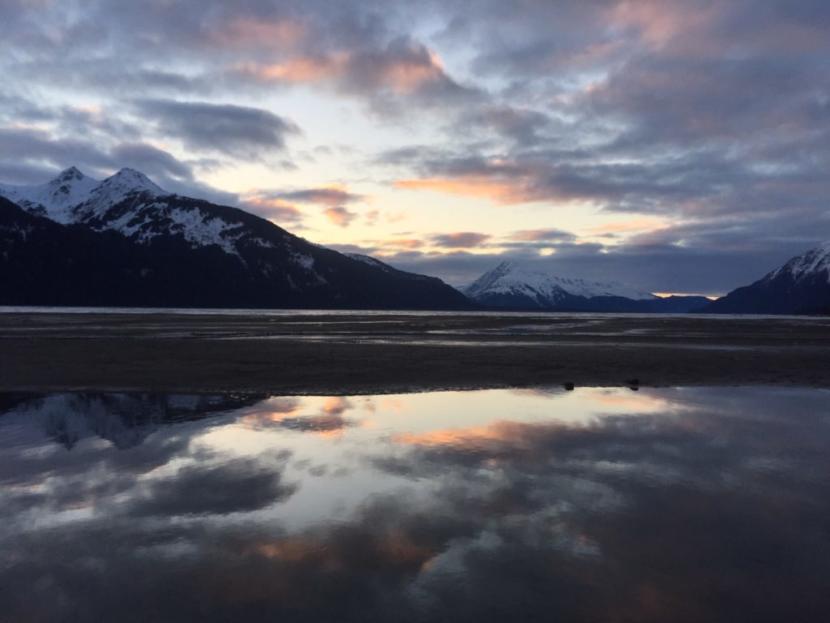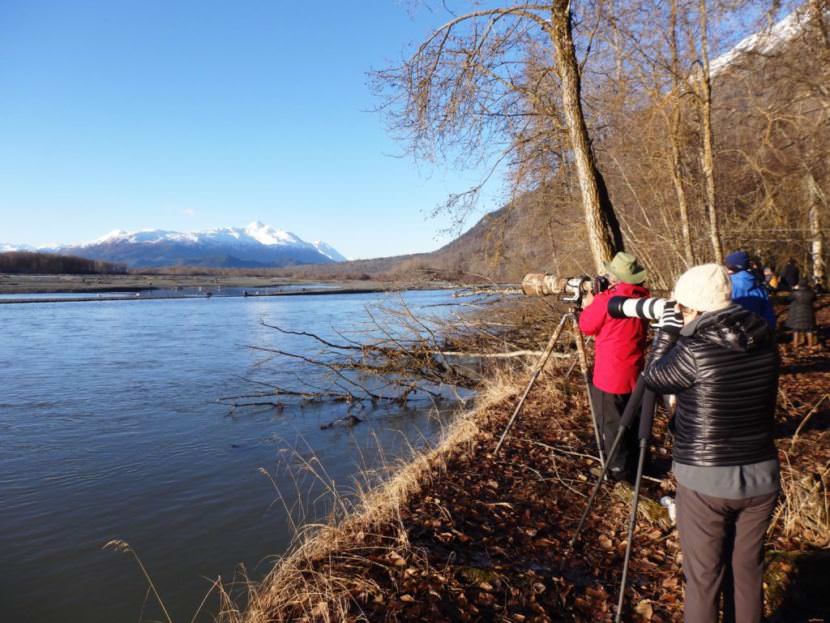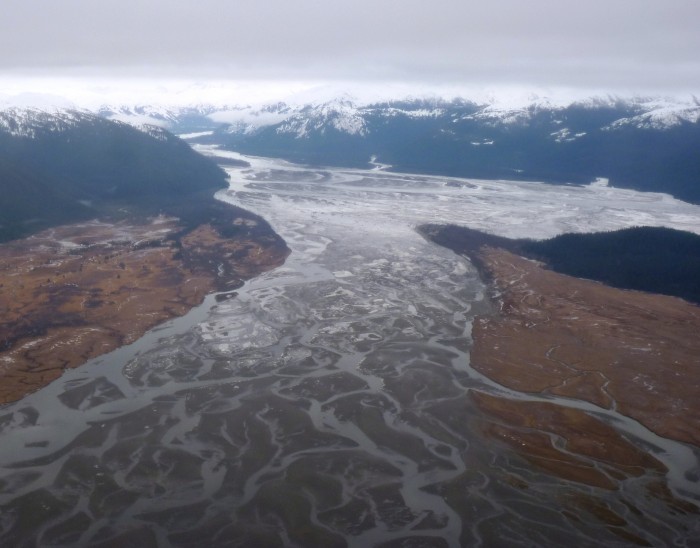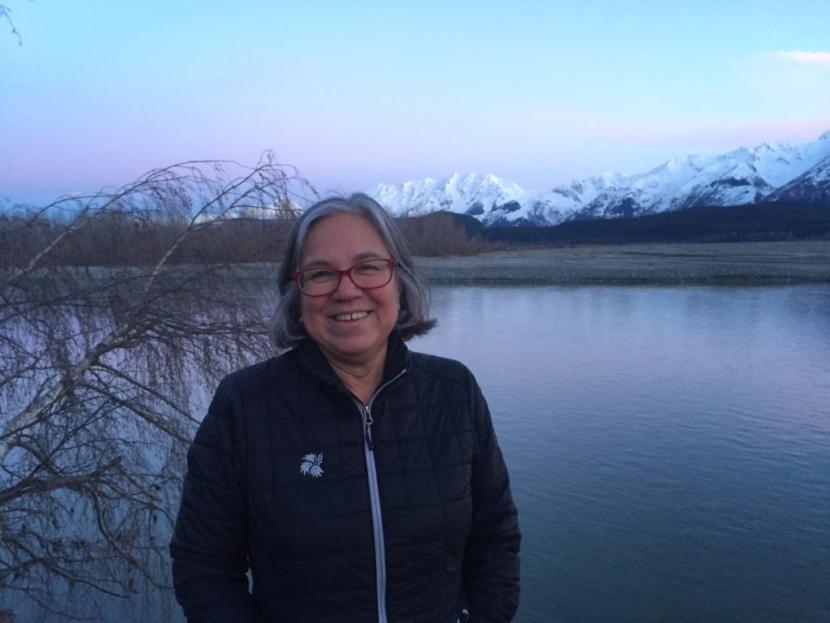
Two of the nation’s 10 most endangered rivers are in Southeast Alaska.
That’s according to American Rivers, a conservation group opposed to mining and energy development in wilderness areas.
Kimberley Strong is president of the Chilkat Indian Village of Klukwan. Her village sits on the Chilkat River, recently named the sixth-most endangered river in the nation by American Rivers.
“When you look around the village here, and we’re on the banks of the Chilkat River, you’ll see just in eye shot here there’s two smokehouses to my right, three smokehouses to my left,” Strong said while standing on a bank of the Chilkat River in front of her home.
“This is really a big part of our livelihood, is traditional food gathering. The salmon that runs in the Chilkat River has been part of our life for thousands of years. To endanger that is life-threatening to us,” she said.
Klukwan is one of the longest continually-inhabited places in North America. The name means “eternal village.” The Tlingit have lived on this river for thousands of years, feeding off the rich salmon runs.
But Strong said mining upstream could pose an existential threat to all that.
“This is a food sovereignty issue,” she said. “It’s having access to the natural resources that are around us.”
Strong said in Klukwan, the Chilkat is more than a river: It’s the history of a people and their food source. That’s why she’s fighting for the resource.

American Rivers, an advocacy group based in Washington, D.C., has been releasing its “America’s Most Endangered Rivers” report for over three decades. Communications Director Amy Kober said the purpose of their annual endangered rivers list is to raise national awareness about rivers they consider to be threatened.
“It’s powerful because it’s a call to action. This report showcases 10 rivers facing urgent threats,” Kober said. “These rivers aren’t the worst rivers in the country or the most polluted rivers in the country, but they are rivers really at a crossroads.”
Kober said people have taken action on behalf of rivers they’ve highlighted in the past. She said attention generated by the report helped spare the Hoback River in Wyoming from nearby natural gas development, and it helped spur cleanup actions on the St. Lawrence River in New York and Canada.
The Chilkat River is one of two Southeast Alaska rivers listed in the 2019 report. The Stikine River, which flows out of British Columbia and empties near Wrangell, is 10th.
Both are listed for the same reason: mining development.
On the Chilkat, Constantine Metal Resources is a Canadian company with exploratory permits for a potential mine in the upper watershed. The company has said any future operation would be safe and bring good jobs to the region. A message left with Constantine’s Haines office wasn’t immediately returned.
Not everyone is convinced. Gershon Cohen of Alaska Clean Water Advocacy lives in Haines. He said that Constantine’s Palmer Project would store mine waste that could threaten the ecology.
“There is just too much history of large mines polluting public waters and destroying fishery resources, that we felt this can’t be ignored,” Cohen said.
The Chilkat has runs of all five salmon species that are caught by sport anglers for subsistence and commercial use. It also flows through the Chilkat Bald Eagle Preserve, where those fish feed one of the largest gatherings of bald eagles in the world every fall.

American Rivers says the Stikine River faces similar threats. Like the Chilkat River, the Stikine is in an active seismic zone — it flows over the Queen Charlotte-Fairweather Fault. There’s a working mine at its headwaters over the border: The Red Chris mine is operated by Imperial Metals, the same company responsible for a massive tailings dam failure at Mount Polley mine in 2014.
Transboundary mining has long been a source of contention between Alaska and British Columbia. Critics say Alaska stands to receive pollution downstream but none of the economic gains from the mine.
The Southeast Alaska Indigenous Transboundary Commission has accused the province of British Columbia of violating the Boundary Waters Treaty of 1909, which prohibits the United States and Canada from polluting each other’s waters.

Klukwan, on the banks of the Chilkat River, has about 100 residents. Strong said she’s glad Chilkat is recognized nationally as a treasure worth protecting.
But for her, it’s not just a cause — it’s home.
“To hear that other people are now raising up and recognizing the threats that a mine could have on our life here in the valley is heartwarming. And, really, kind of scary, this recognition that it is being threatened. That experts believe it’s being threatened is something to listen to,” she said.
